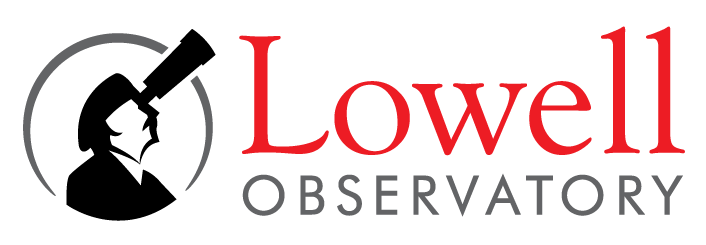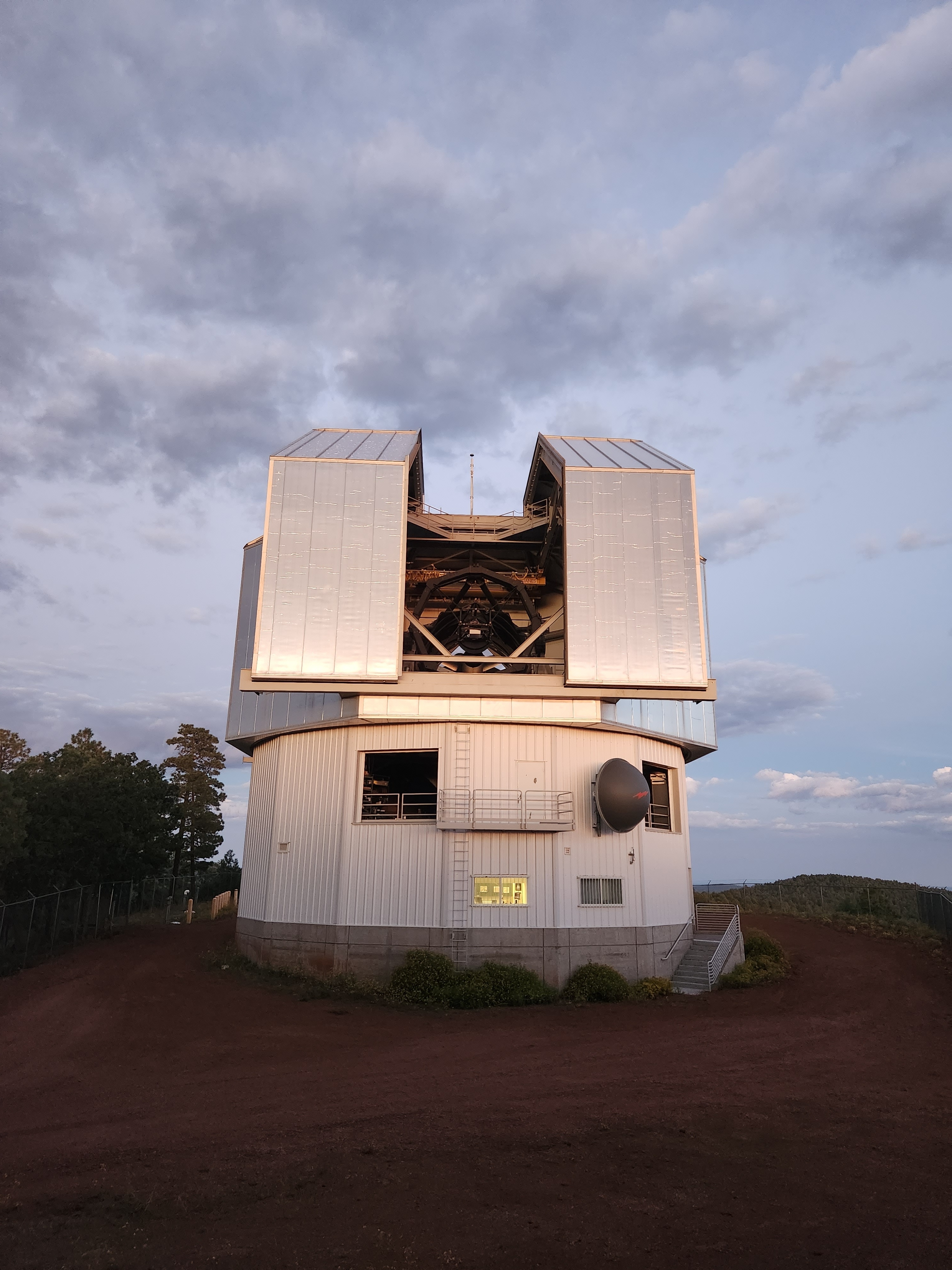Versions Compared
Key
- This line was added.
- This line was removed.
- Formatting was changed.
| Excerpt Include | ||||||
|---|---|---|---|---|---|---|
|
| Livesearch | ||||
|---|---|---|---|---|
|
| Warning | ||
|---|---|---|
| ||
Continuing in 2023B and 24A, limited in-person observing will be supported at LDT. For those observing remotely, see LDT Remote Observing Notes. |
| Float | ||
|---|---|---|
| ||
Image: J. Fernandez (Lowell)
|
The 4.3-m Lowell Discovery Telescope (LDT) is Lowell Observatory's flagship facility at a dark-sky site approximately 40 miles southeast of Flagstaff on the Coconino National Forest.Lowell Observatory operates the LDT in partnership with Boston University, University of Maryland, Northern Arizona University, University of Toledo, and Yale University. The telescope is classically scheduled by semester, with the current being 2023B.The . See the current call for observing proposals is linked in the sidebar at left for Lowell Observatory and Partner Institution members.
Facility Instruments:
LMI (Optical Imager)
DeVeny (Low- to Medium-Resolution Optical Spectrograph)
NIHTS (Near-infrared Low-Resolution Spectrograph)
Visitor / PI Instruments:
EXPRES (High-Resolution Optical Spectrograph)
QWSSI (Optical Speckle Imager)
RIMAS (Near-infrared Spectrograph / Imager – Under Development)
Instrumentation Main Page
List of LDT Scientific and Technical PublicationsThe facility was constructed as the Discovery Channel Telescope (DCT), and was renamed in 2019 in cooperation with Discovery Communications.
| Background Color | |||||||||||||||||||||||||
|---|---|---|---|---|---|---|---|---|---|---|---|---|---|---|---|---|---|---|---|---|---|---|---|---|---|
| |||||||||||||||||||||||||
Updates (and Old Updates)UPDATE: The 2024A 2025B LDT Schedule scheduled has been released. (2023Dec082025Jun24) UPDATE:Check with staff about the upcoming PypeIt Workshop on December 15. (2023Nov20)UPDATE: Call for Proposals for 2025B released. (2025Apr09) UPDATE: LMI is back on-line as of Jan 30. (2025Jan31The change over to the new confluence server https://confluence.lowell.edu has happened. Please let us know if you run across problems with these pages. (2022Mar07) UPDATE: DeVeny Image Quality Issue: See the DeVeny Instrument Page for more information. (2021Nov15is back on-line as of Jan 14. (2025Jan14) UPDATE: The new VPN platform is now required for connection to the Lowell network. All remote observers MUST update their VPN settings: Watchguard SSLVPN Installation. (2021Sep06Check your VPN settings before your next remote observations (2024May14)
|

